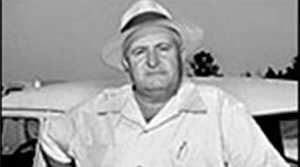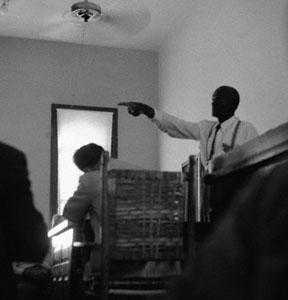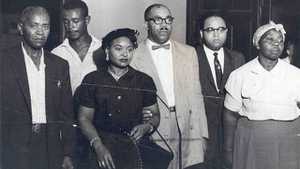The Impact of Emmett Till's Murder
The sight of Emmett Till's brutalized body pushed many on the sidelines directly into the fight for civil rights.
By 1955, African Americans across the country, including in the segregated South, had begun the struggle for justice. Emmett Till's murder was a spark in the upsurge of activism and resistance that became known as the Civil Rights movement. The sight of his brutalized body pushed many who had been content to stay on the sidelines directly into the fight.
Months before Emmett's death in 1955, two African American activists in Mississippi had been murdered. An NAACP field worker, the Reverend George Lee, was shot and killed at point blank range while driving in his car after trying to vote in Belzoni. A few weeks later in Brookhaven, Lamar Smith was shot and killed in front of the county courthouse -- in broad daylight and before witnesses -- after casting his ballot. Both were active in black voter registration drives. No one was arrested in connection with either murder.
Emmett Till's death had a powerful effect on Mississippi Civil Rights activists. Medgar Evers, then an NAACP field officer in Jackson, Mississippi, urged the NAACP national leadership to get involved, and along with NAACP field workers Ruby Hurley and Amzie Moore, conducted a secret search for black witnesses willing to take the serious risk to come forward.
Other local leaders courageously stepped forward after the Till murder. Physician and Civil Rights leader Dr. T. R. M. Howard of the small, all-black Delta town of Mound Bayou was already known in Mississippi for his activism. Howard, whose life had been repeatedly threatened, had armed bodyguards to protect him and his family. During the trial, Howard extended this protection to the black witnesses and to Emmett's mother, Mamie Till Mobley. After they testified, Howard, Medgar Evers and other NAACP officials helped the black witnesses slip out of town.
After Till'murderers, J. W. Milam and Roy Bryant, were acquitted, Howard boldly and publicly chastised FBI Director J. Edgar Hoover: "It's getting to be a strange thing that the FBI can never seem to work out who is responsible for the killings of Negroes in the South." In December 1955, after the national black magazine Ebony reported that Dr. Howard was on the Ku Klux Klan's death list and that several others on the list had already been killed, Howard sold most of his property in Mound Bayou, packed up his family and relocated to Chicago.
For Dr. Howard and others, the immediate impact of the acquittal of Till's killers was increased repression in Mississippi. Still, the momentum and mobilization that followed Till's murder fed the next stage of the movement. One hundred days after Emmett's death, a black woman, Rosa Parks, refused to give up her seat to a white passenger on a Montgomery city bus and was arrested for violating Alabama's bus segregation laws. The Women's Democratic Council, under Jo Ann Robinson, called for a citywide bus boycott and asked a young, 26-year-old minister to help. His name was Reverend Martin Luther King Jr.







